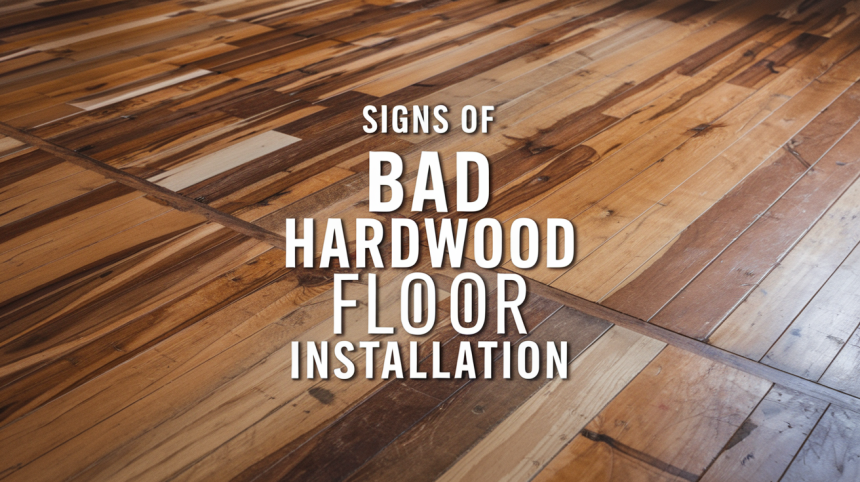Hey there! Got hardwood floors or thinking about getting them?
They look fantastic, but only if they’re put in right. Many homeowners focus on picking the perfect wood but overlook how it’s installed.
Big mistake!
Installation matters just as much as the wood itself. When floors aren’t installed properly, you’ll end up with all sorts of headaches that go way beyond just looks.
Think structural issues, floors that don’t last, and repairs that’ll make your wallet cry.
The good news? If you know what to watch for, you can spot these problems early.
This guide shows you exactly what bad installation looks like so you can protect your investment and enjoy those beautiful floors for years to come.
Why Proper Hardwood Floor Installation Matters
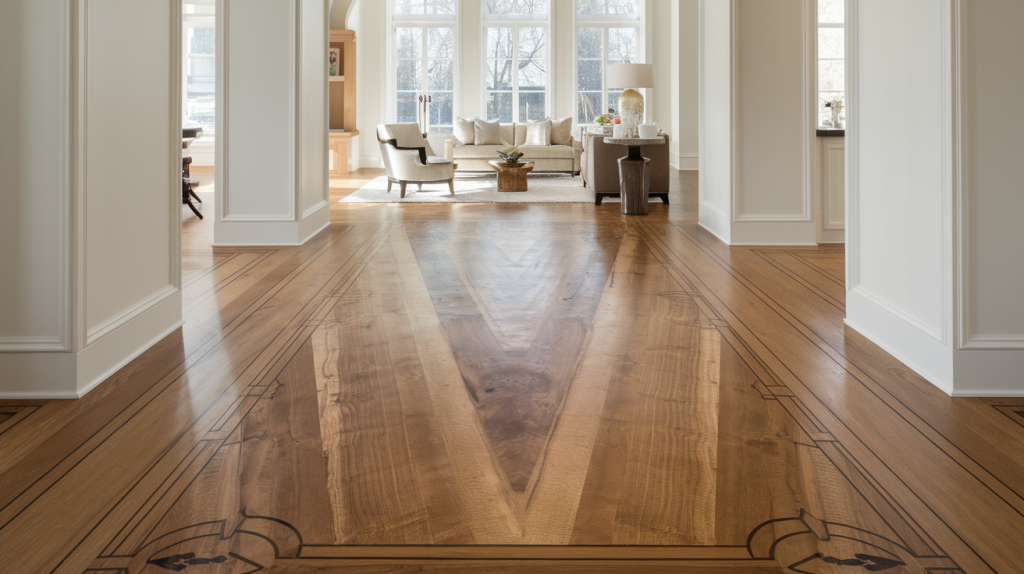
The correct installation of hardwood floors plays a crucial role in both their durability and visual appeal.
Professional installers follow specific procedures to ensure the wood acclimatizes properly to your home’s environment and that the subflooring provides adequate support.
When shortcuts are taken during installation, problems often follow.
These can range from minor cosmetic issues to major structural concerns that affect the entire floor.
Proper installation creates a foundation for your flooring to perform as intended, maintaining its beauty and functionality for decades.
Poor installation can lead to premature aging, structural weakness, and costly repairs that could have been avoided.
By recognizing the importance of quality installation from the start, you’ll protect your investment and ensure your hardwood floors remain beautiful and functional for years to come.
Signs of Bad Hardwood Floor Installation
1. Uneven Surface
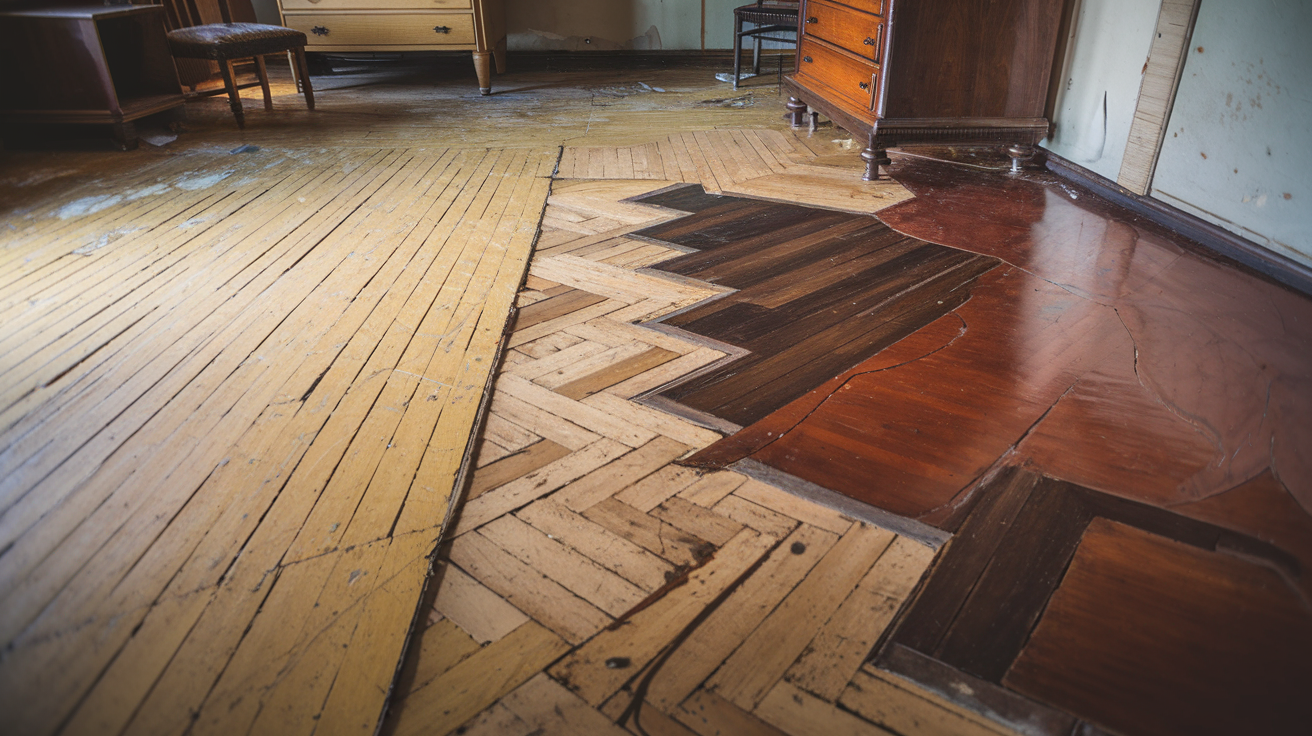
An uneven surface is one of the most noticeable signs of poor installation.
When walking across your floor, you might feel certain areas that dip or rise unexpectedly. This unevenness can appear as visible waves or bumps in the flooring.
This usually happens when the subfloor wasn’t properly prepared or leveled before installation.
Over time, uneven floors can lead to increased wear on certain areas, causing premature aging of your hardwood in those spots.
2. Gaps Between Floorboards
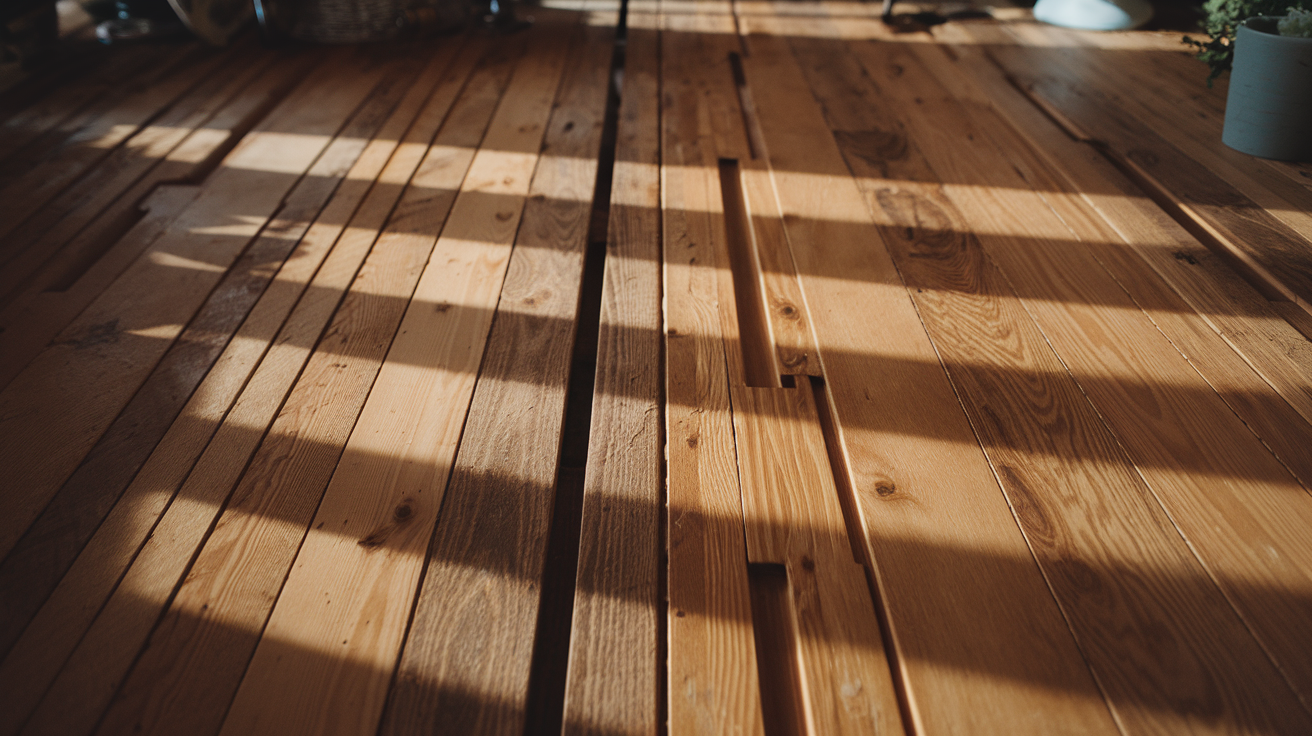
Properly installed hardwood floors should fit together snugly.
If you notice visible spaces between the boards, this indicates an installation problem. These gaps are particularly common during certain seasons, but they shouldn’t be noticeable year-round.
Gaps often occur when the wood wasn’t given enough time to acclimate to your home’s humidity and temperature before installation.
These spaces not only look unattractive but can also collect dirt and debris, making cleaning more difficult.
3. Warped or Buckled Boards
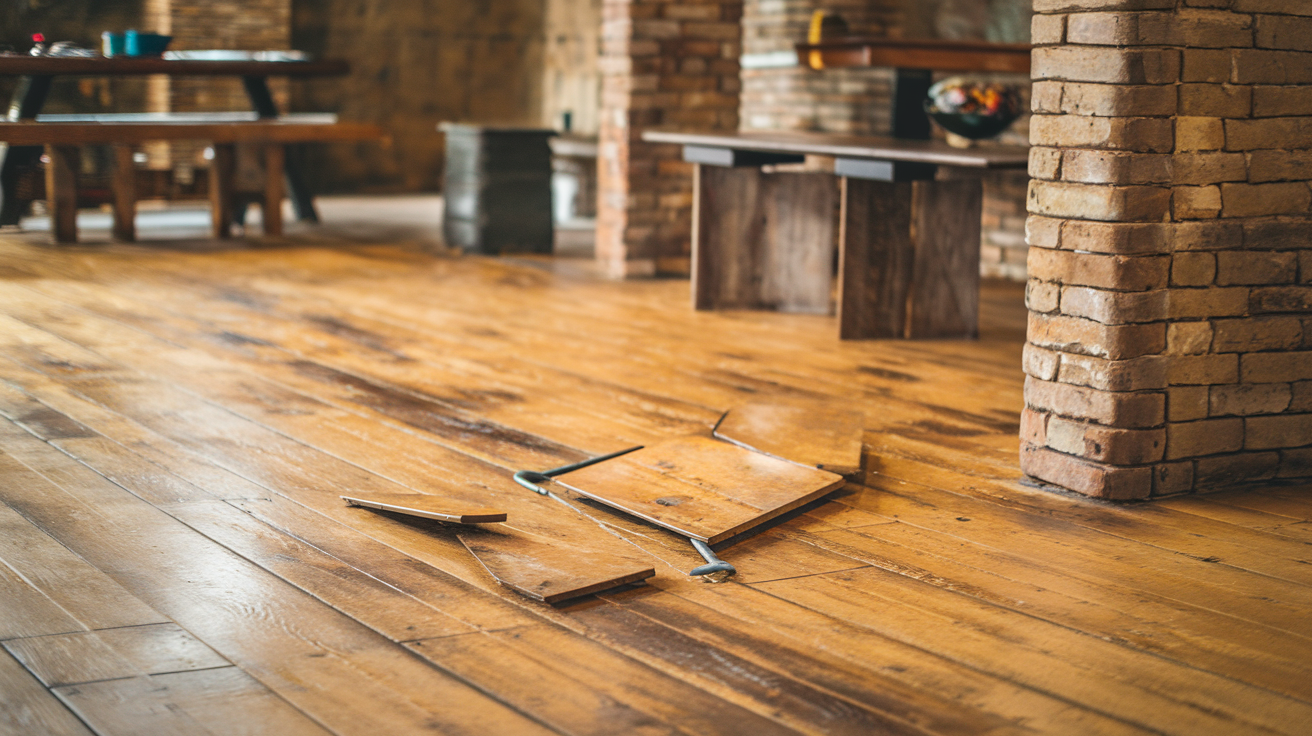
Warping or buckling appears as boards that rise up from the subfloor, creating a tent-like appearance.
This serious issue often occurs when moisture problems weren’t addressed during installation.
Common causes include insufficient acclimation time, improper subfloor preparation, or installation during extremely humid conditions.
Buckled floors not only look bad but can also create tripping hazards and indicate potential water damage beneath the surface.
4. Scratches and Dents
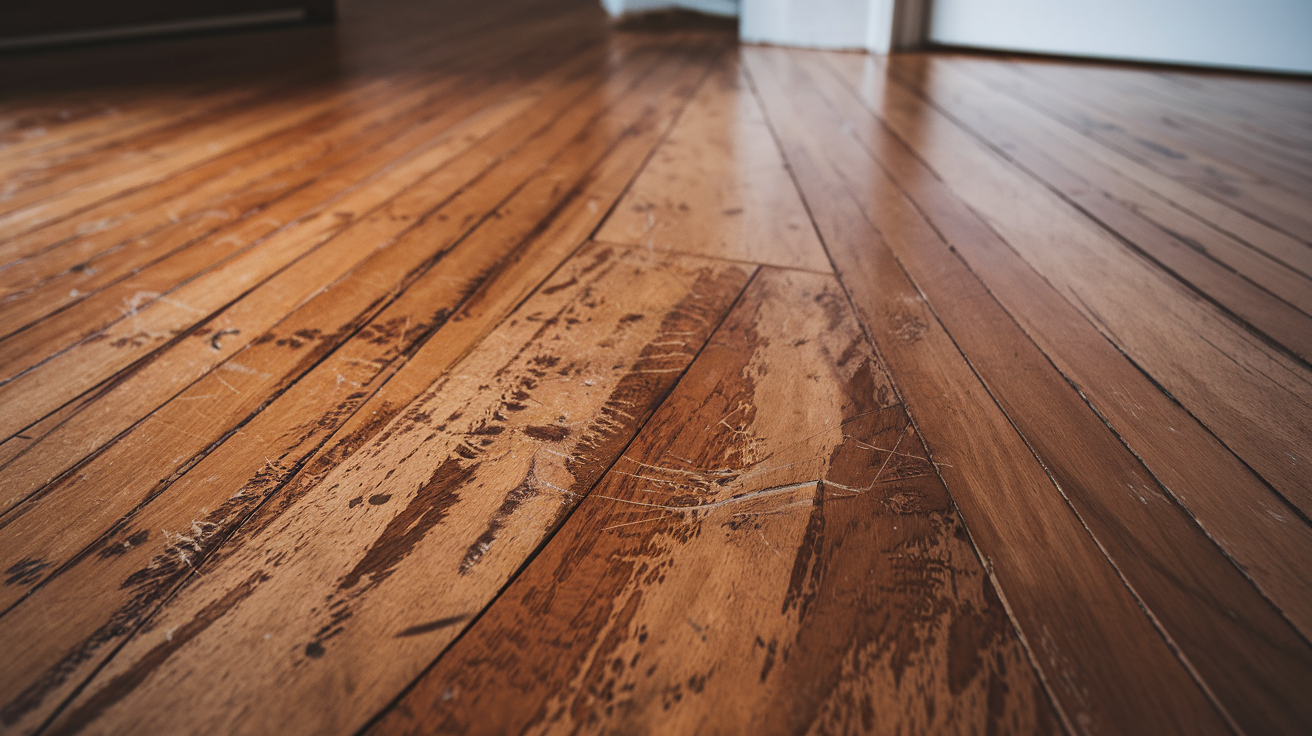
While some wear is expected with hardwood floors, excessive scratches or dents shortly after installation suggest problems.
This may indicate that the wood wasn’t properly finished or that a protective coating wasn’t correctly applied.
Poor handling during installation can also lead to premature damage.
Quality installers take care to protect the wood throughout the process, minimizing the risk of installation-related scratches and dents.
5. Creaking or Squeaky Floors
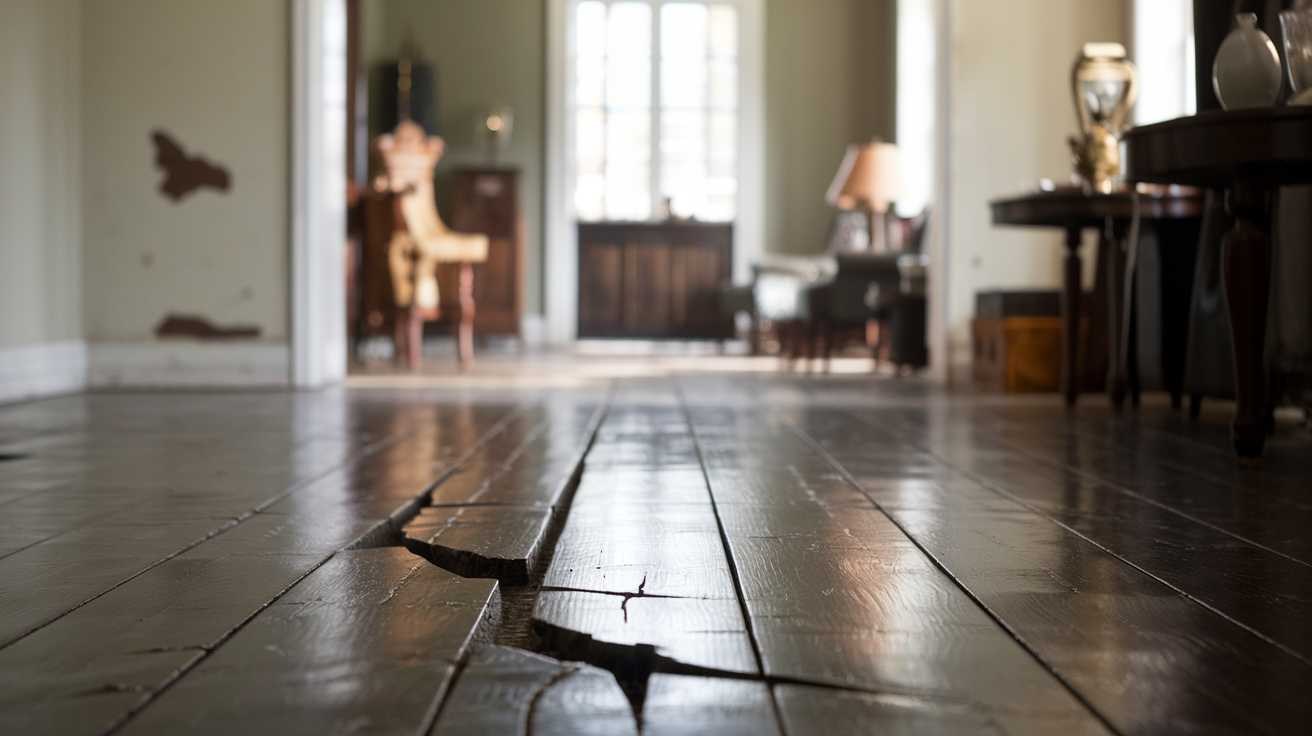
Some minor noise is normal with wood floors, but excessive creaking or squeaking points to installation issues.
These sounds typically occur when floorboards aren’t properly secured to the subfloor.
Loose nails, inadequate subflooring, or improper spacing can all contribute to noisy floors.
Besides being annoying, these sounds indicate that your floor isn’t as stable as it should be, which may lead to additional problems over time.
6. Uneven Color
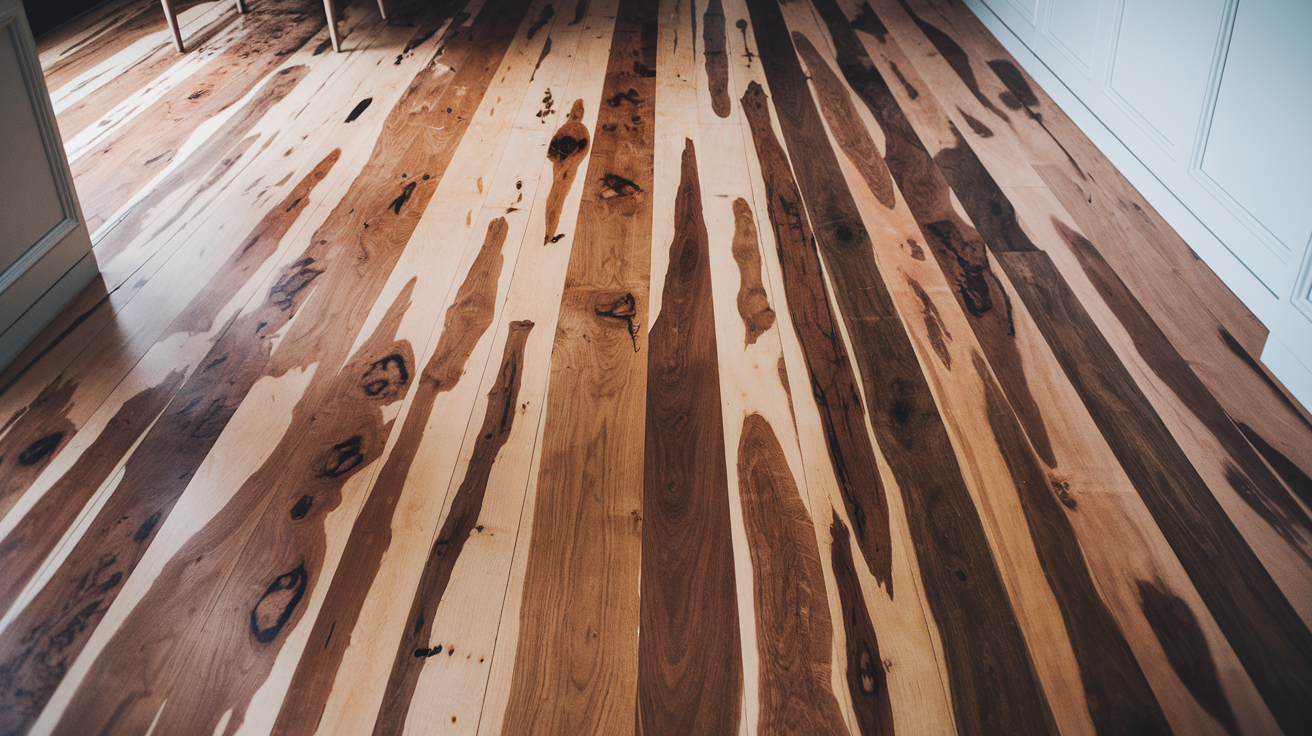
Hardwood flooring should have a relatively consistent color throughout the installation.
Dramatic color variations beyond the natural character of the wood suggest that the boards weren’t properly mixed during installation or weren’t from the same batch.
Uneven coloring can also result from improper finishing techniques or when the wood wasn’t given adequate time to acclimate.
This issue is primarily aesthetic but can significantly impact the overall look of your floors.
7. Lack of Expansion Gaps
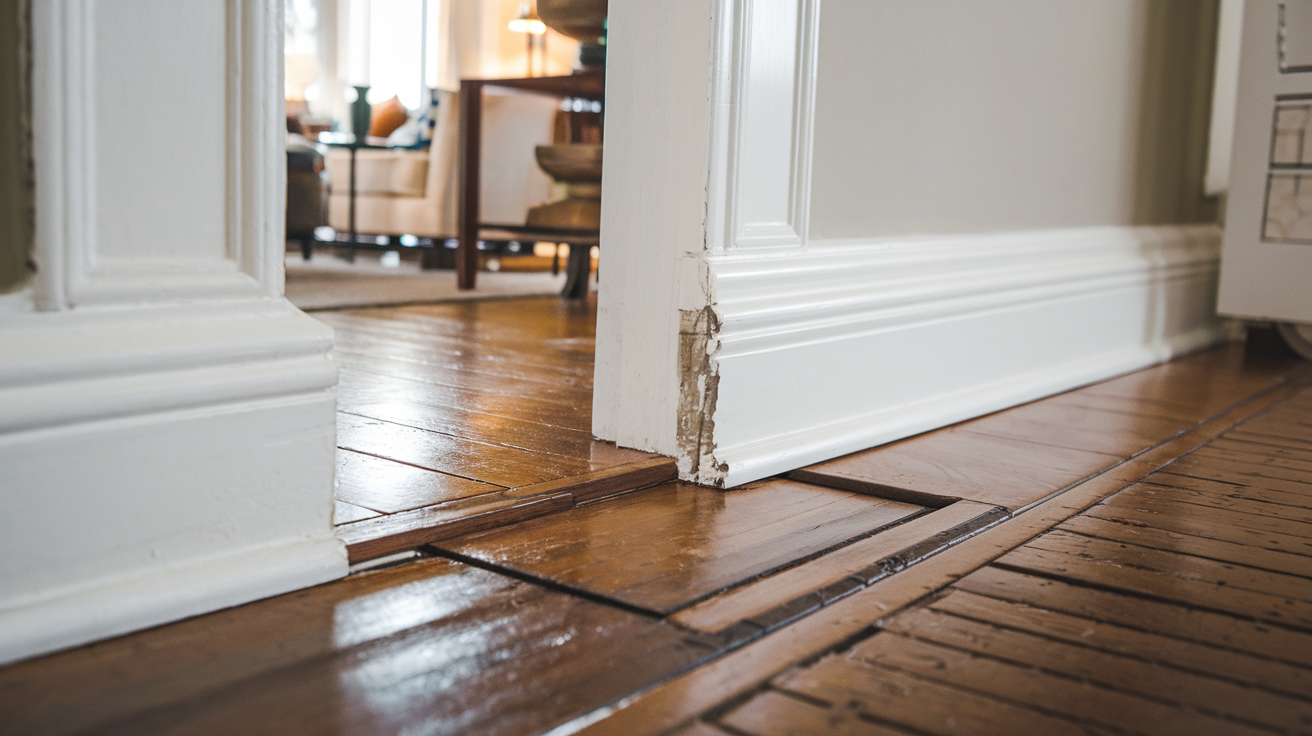
Wood naturally expands and contracts with changes in humidity and temperature.
Professional installers know to leave small gaps around the perimeter of the room to accommodate this movement.
When these expansion gaps are missing, the floor has nowhere to expand, leading to buckling or warping.
You might notice this problem when boards push up against walls or thresholds, creating visible pressure points.
8. Ill-Fitting Trim and Baseboards
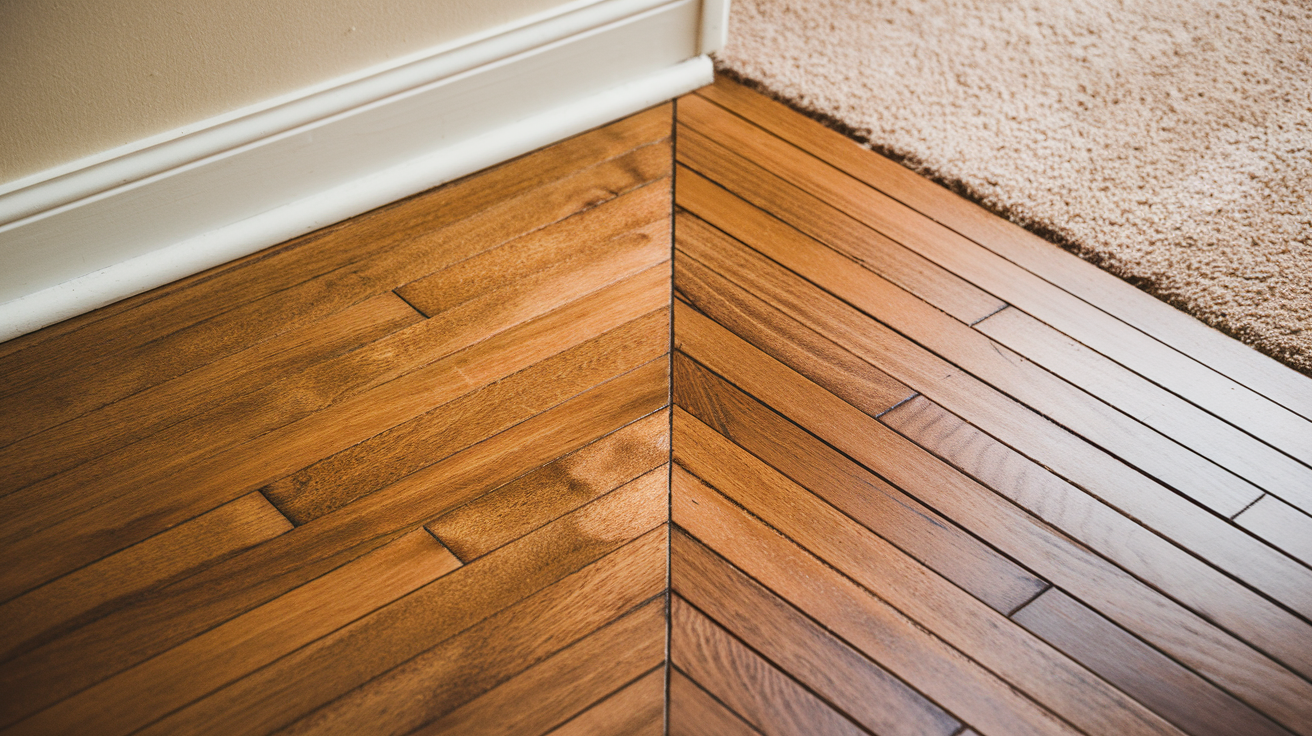
The finishing touches matter. Poorly fitted trim or baseboards with visible gaps or uneven spacing indicate rushed or careless installation work.
Quality installation includes careful attention to how the flooring meets walls, doorways, and transitions.
When these details are overlooked, the overall appearance of your hardwood floors suffers, even if the main flooring was installed correctly.
9. Visible Nail Holes
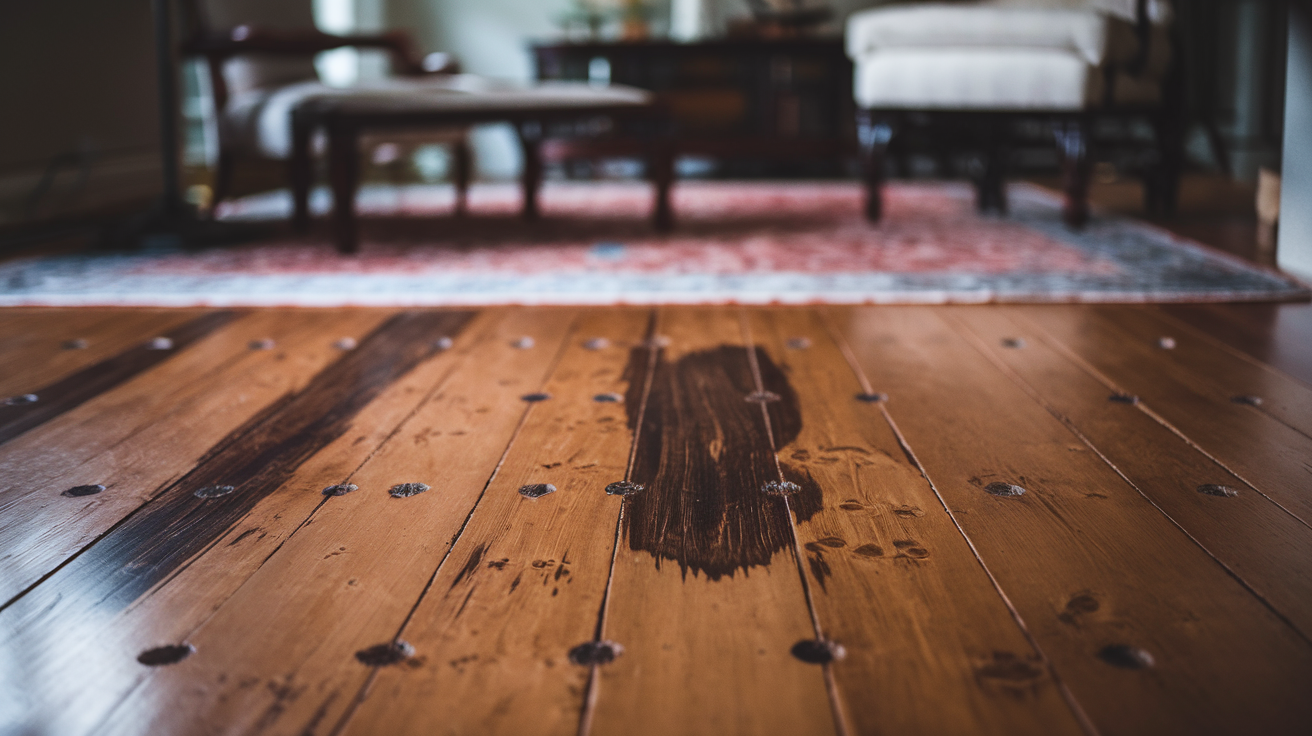
In professional hardwood floor installation, nail holes should be virtually invisible.
Obvious nail holes, particularly ones that haven’t been filled and finished, suggest hasty or amateur installation work.
Besides being unsightly, exposed nail holes can collect dirt and may lead to additional damage to the wood surrounding them.
They also indicate that proper installation techniques weren’t followed throughout the process.
10. Uneven Plank Alignment
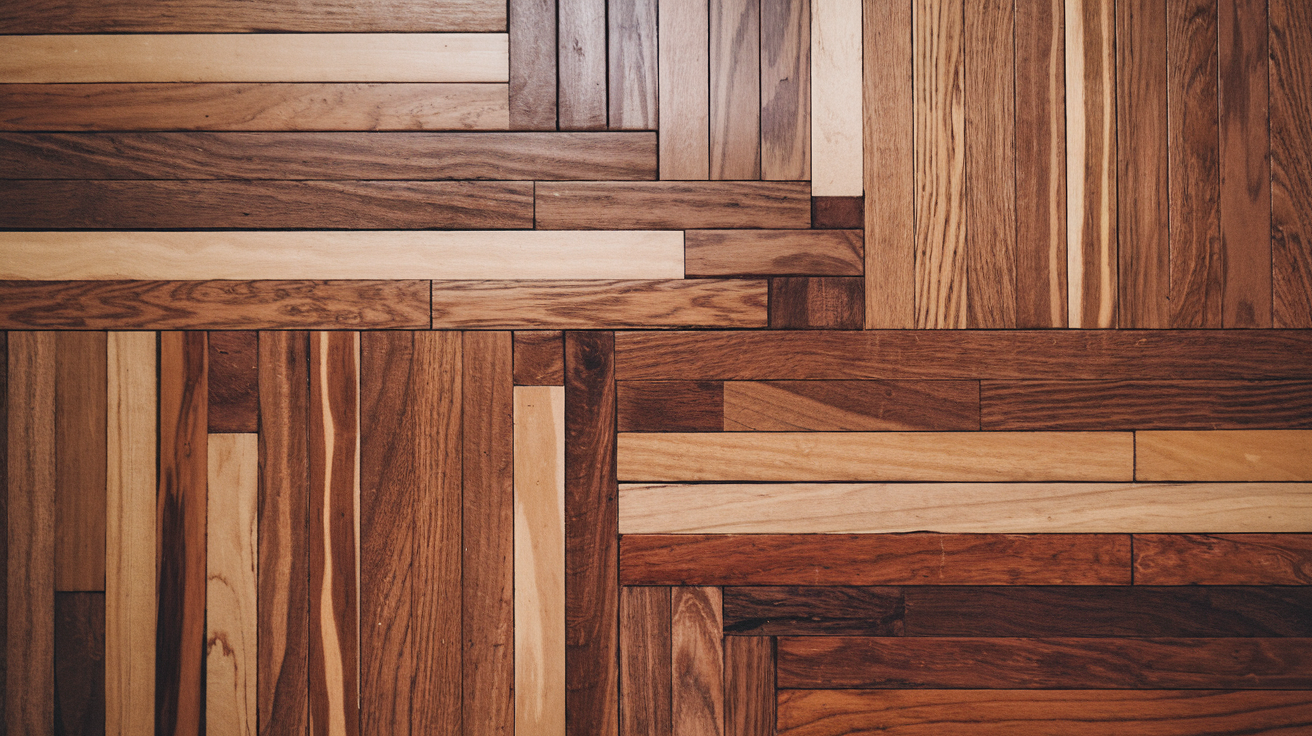
Properly installed hardwood floors should have clean, straight lines where the planks meet.
Misaligned planks create irregular patterns and uneven seams that stand out for the wrong reasons.
This issue often occurs when installers rush or don’t use proper spacing tools.
The result is a floor that looks unprofessional and may develop additional problems as the misaligned boards respond differently to environmental changes.
11. Moisture Damage
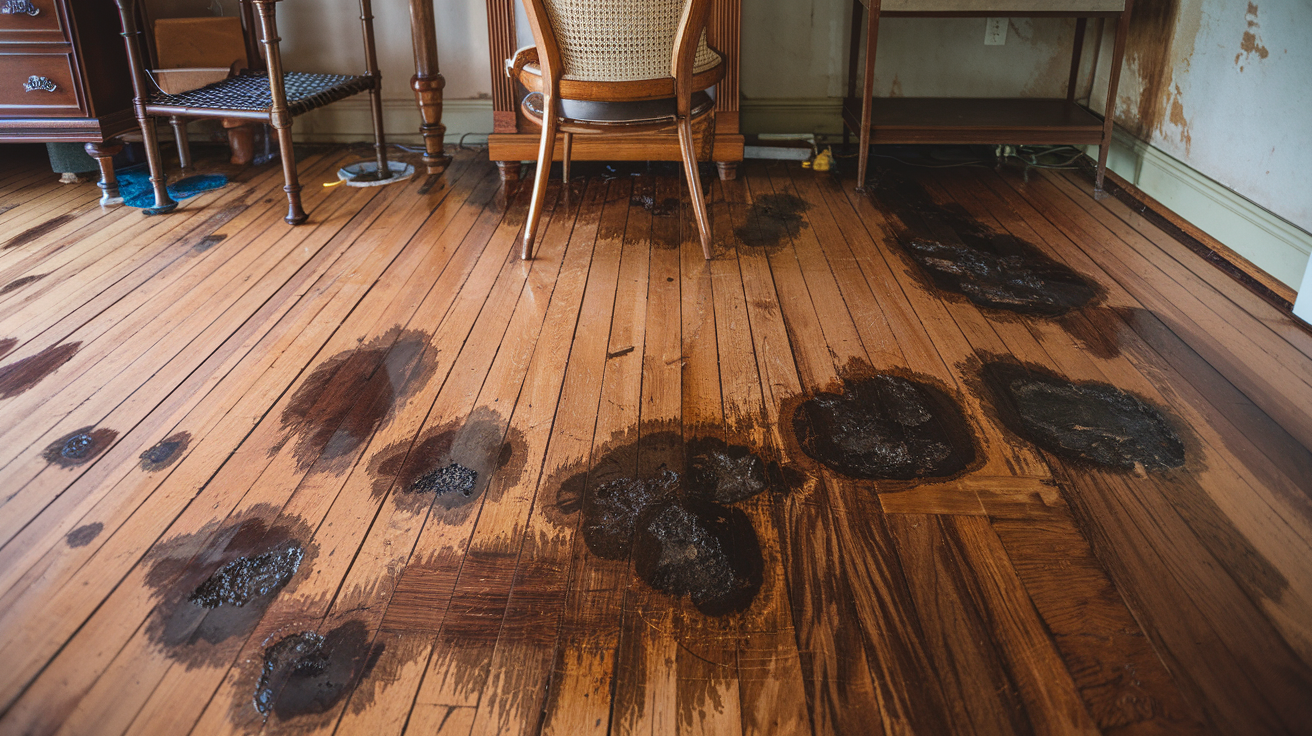
Signs of moisture damage—such as discoloration, cupping (edges higher than centers), or crowning (centers higher than edges)—shortly after installation indicate serious installation flaws.
This typically happens when moisture testing is not performed on the subfloor, proper moisture barriers are not installed, or the wood’s moisture content is not properly balanced with the home’s environment before installation.
12. Warped or Cracked Edges
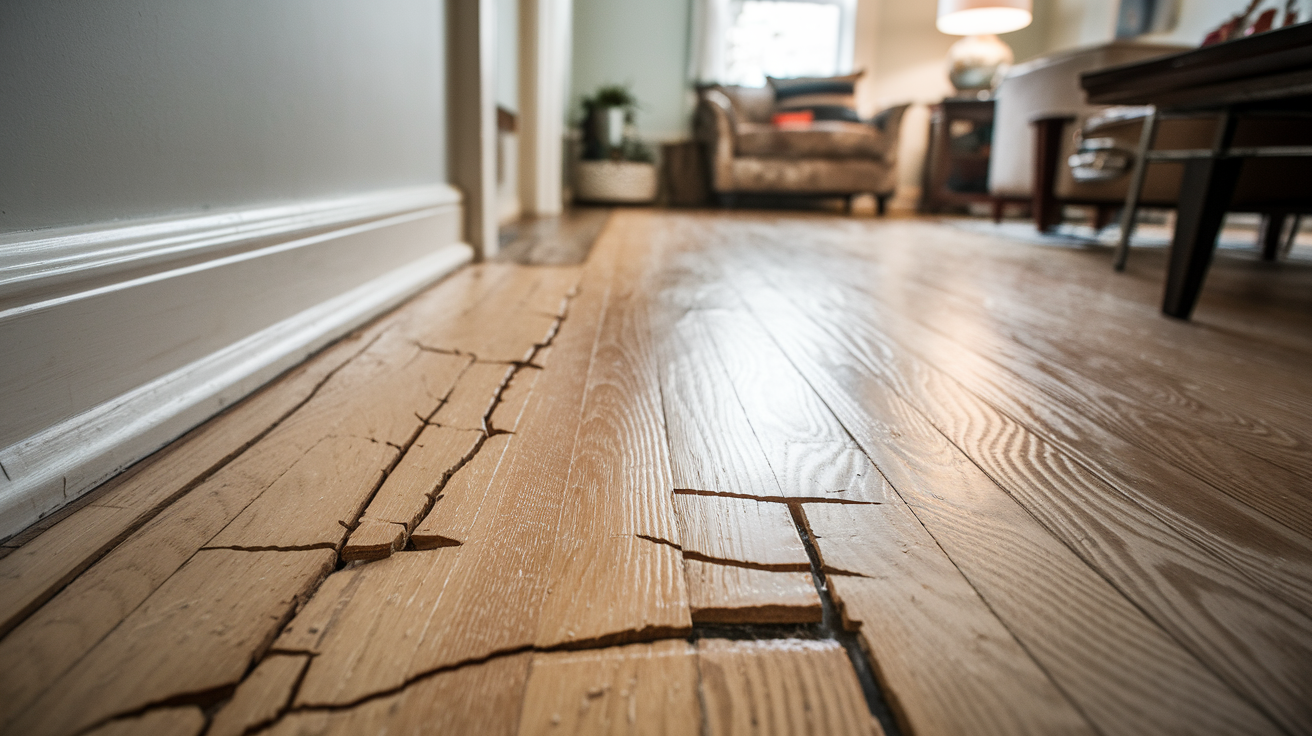
The edges of hardwood planks should remain intact and straight.
Warping or cracking along the edges suggests that the wood was damaged during installation or that it hasn’t been properly protected from moisture.
These issues often occur when improper nailing techniques are used or when the wood is forced into place rather than carefully fitted.
Over time, damaged edges can worsen and affect surrounding boards.
13. Shrinking or Expanding Boards
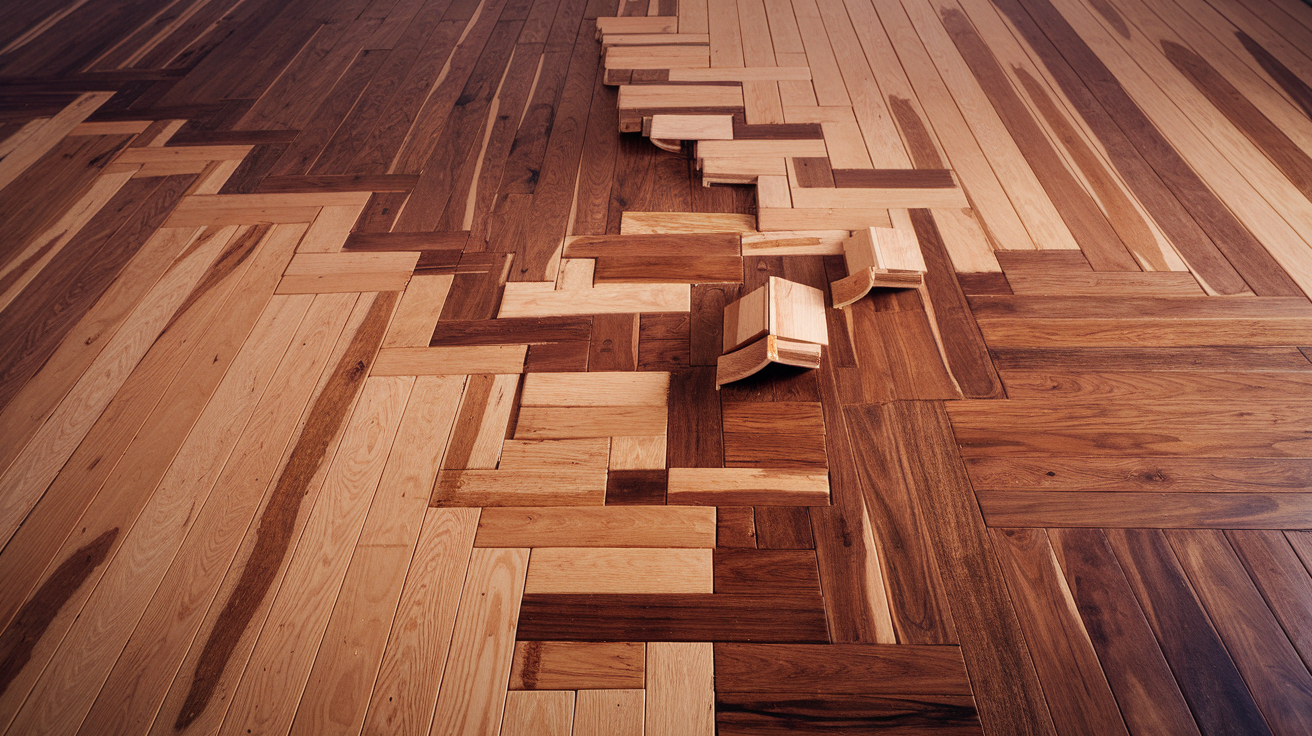
While some seasonal movement is normal, excessive shrinking or expanding indicates that the wood wasn’t properly acclimated before installation.
You might notice this as boards that appear too tight during humid weather or with large gaps during dry periods.
This problem occurs when installers don’t allow the wood to reach equilibrium with your home’s typical humidity levels before securing it in place.
The result is a floor that moves much more than it should with seasonal changes.
14. Uneven Subfloor
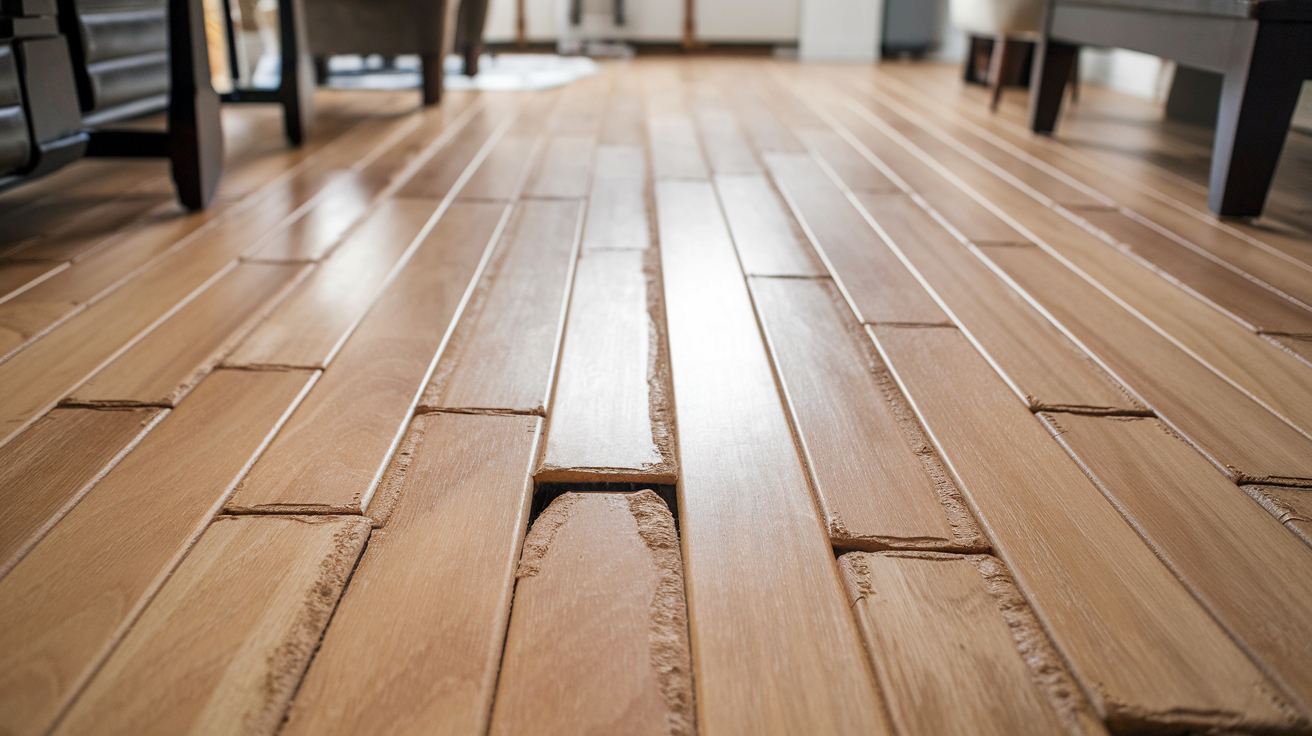
An uneven subfloor creates numerous problems for hardwood installation.
You might notice this issue as soft spots, bouncy areas, or sections that feel different underfoot as you walk across the room.
Professional installers should always inspect and prepare the subfloor before laying hardwood.
When this step is rushed or skipped entirely, the resulting floor will never perform properly, regardless of the quality of the hardwood used.
15. Lack of Adhesive or Incorrect Use of Nails

Proper securing techniques are essential for hardwood floor installation.
Inadequate use of adhesive or improper nailing can lead to loose boards, excessive movement, and premature wear.
You might notice this problem as boards that feel unsecured or that move when walked upon.
Over time, improperly secured flooring will develop additional issues as the boards shift and wear unevenly.
What to Do if You Spot These Signs
Don’t worry if you’ve identified some of these issues with your hardwood floors – there are solutions available for every installation problem.
Here’s what you can do:
- Document the Issues: Take photos and make detailed notes of the problems, including where they occur in your home.
- Minor Issues: Spot Repairs: For smaller problems like visible nail holes or small gaps, spot repairs may be a solution.
- Professional Intervention: Serious issues, such as buckling, severe unevenness, or structural concerns, typically require professional help. A flooring specialist can assess the situation and recommend appropriate fixes.
- Choosing the Right Professional: When hiring a professional, look for those with specific experience in hardwood floor restoration rather than general contractors.
- Full Reinstallation: For complete reinstallation, ensure the installer is qualified by verifying their credentials, viewing previous work, and obtaining detailed written estimates.
A good installer will adhere to industry standards such as proper acclimation, moisture testing, and using correct installation techniques tailored to your wood type and home conditions.
Remember that addressing these issues promptly will prevent further damage and potentially save you money in the long run.
Wrapping it Up!
Let’s face it – you’ve spent good money on those hardwood floors, and you deserve to get what you paid for!
Proper installation isn’t just a nice-to-have, it’s absolutely essential if you want your floors to last and look good doing it.
Now that you know these warning signs, you’re in a much better position to spot trouble early.
Noticed any of these issues on your own floors?
Don’t panic! Give a call to a qualified flooring pro who can take a look and tell you what’s going on.
The sooner you tackle these problems, the less they’ll cost you down the road.
Don’t wait until small issues become big ones! With a little attention now, those beautiful hardwood floors can keep looking great for years and years.
Your future self (and your wallet) will thank you!

